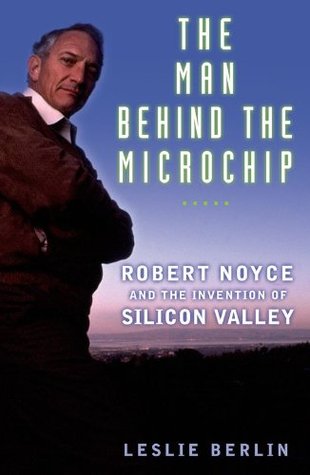More on this book
Community
Kindle Notes & Highlights
Read between
April 12 - April 24, 2022
127 people enter an elimination tennis tournament. Since it’s an odd number, one player must draw a bye in the first round. How many matches must be played to determine a winner?
In the diffusion process, a semiconductor is cooked in a furnace containing appropriate impurities (called “dopants”) that then seep into the silicon in much the same way that hickory flavor seeps into meat cooked in a barbecue pit.
Physics, chemistry, optics, thermodynamics, fluid mechanics: every one of these disciplines had to work in concert to build a functional semiconductor device.
An integrated circuit is a complete electronic circuit built on a chip of silicon small enough to be carried off by an ant.
Imagine a cake that somehow grows its own icing. The surface of the cake is analogous to the surface of the semiconductor; the icing is similar to the oxide layer.
A mightily impressed Noyce likened Hoerni’s oxide layer to “building a transistor inside a cocoon of silicon dioxide so that it never gets contaminated. It’s like setting up your jungle operating room. You put the patient inside a plastic bag and you operate inside of that, and you don’t have all the flies of the jungle sitting on the wound.”
Hoerni’s jungle transistor clearly merited a patent. Two, in fact: one for the bullseye structure and one for the process to build it. It also needed a name. Fairchild Camera and Instrument vice president Richard Hodgson, who immediately came to Mountain View to see the device, suggested calling the nearly flat transistor and the process that produced it “planar.”
Noyce’s patent did not provide much guidance. His patent said that it ought to be possible to build integrated circuits using isolation techniques and the planar process. It did not, however, say how to do it.
A simple gate made with an early integrated circuit would have cost about $150, while another device, identical in function but built with discrete components, might have been $3.
Noyce liked to use a book-printing analogy. The first copy of a book, taken by itself, is extremely expensive because the printer must buy equipment, typeset, proof, and otherwise ready the document for printing. Once the process is in place, however, every additional copy is relatively cheap because the investment in materials and equipment for the original printing is fixed. Moreover, the more copies made, the lower the per-copy price, since the original investment can be amortized over more items.
In 1965, Gordon Moore had pointed out that every 18 months, the number of transistors on an integrated circuit doubled. If this trend predicted by “Moore’s Law” continued, the day was not far off when integrated circuits could be orders of magnitude more complex than their counterparts just a few years ago.
Ted Hoff, who would soon be known around the world as the inventor of the microprocessor,
“Integrated Electronics” (abbreviated to “Intel”).
In effect, Noyce and Moore were saying that in 730 days their company would design a circuit, build a production line, produce in mass quantities a technology that had never before gone beyond lab prototyping, and then sell enough of those circuits to turn a profit. The plan has Noyce’s fingerprints all over it. Looking back 30 years later, Moore said the agenda was “more aggressive than I had ever planned on.”
INTEL INTRODUCED ITS FIRST PRODUCT, a 64-bit random access memory (RAM) in May 1969.
Vadasz and Grove were trying to make MOS transistors that would have silicon, rather than metal, gates.
The most storied example of Intel’s commitment to this approach is the company’s development of the microprocessor—the so-called computer on a chip—in 1969 and 1970.
It is certain, however, that Busicom did not request that Intel build a calculator on a single chip. In fact, where the standard calculator used about six chips, each with 600–1000 transistors, Busicom, which was designing a particularly complex calculator, wanted a set of a dozen specialized chips with 3,000 to 5,000 transistors each.
Busicom was requesting a number of logic chips—the chips that manipulate data rather than just storing it—each of which could do precisely one thing: one chip performed calculations, another controlled the printing, a third handled the display, and so on.
Masks are the detailed blueprints for any type of integrated circuit. In the late 1960s, they regularly consisted of thousands of squares, Xs, dashed lines, dotted lines, fat lines, thin lines—each color-coded and hand-drawn as small as possible, and each symbolizing a transistor or a diode or particular type of connection among the components in a circuit. Engineers had traditionally drawn their own masks, but in 1966, Fairchild had decided to teach a select group of women how to translate the engineers’ plans into mask designs.
needed not Noyce but Andy Grove, who in 1974 said he hoped to model Intel on McDonalds. The hamburger chain, Grove said, had taken standardization to a level that Intel would do well to copy. Intel needed to start thinking of itself as a maker of “high technology jelly beans” as uniform, standard, and predictable as the products served in clamshell boxes and paper wrappers emblazoned with the golden arches. Someone even mocked up a hamburger box emblazoned with “McIntel” for Grove. He kept it on his desk.70
Noyce mentioned that the personal computer was similar to the airplane in this way: the PC was a technical advance that enabled people “to explore intellectual activities” that might otherwise have been beyond their grasp.)


